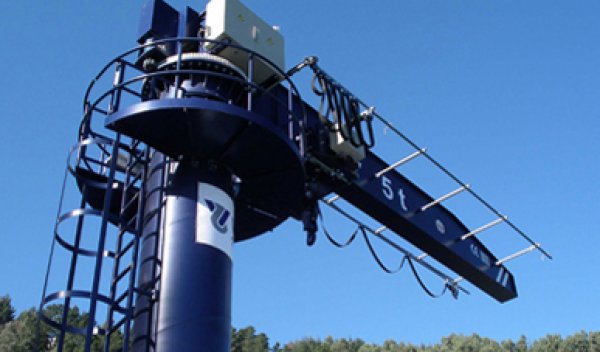Efficient materials handling plays a crucial role in various industries, ensuring smooth operations and maximizing productivity. In the dynamic business landscape of the Philippines, where industries such as construction, manufacturing, logistics, and ports thrive, the need for reliable crane solutions becomes paramount. This blog post aims to explore the significance of crane solutions for materials handling in the Philippines, highlighting their role in optimizing efficiency and ensuring safety.
Understanding the Materials Handling Landscape in the Philippines
The Philippines’ diverse industries face unique challenges when it comes to materials handling. With a booming construction sector, a robust manufacturing industry, and a busy logistics network, the demand for efficient crane solutions is high. Each industry requires tailored solutions to meet their specific needs and overcome challenges related to heavy loads, limited space, and complex operations. Customized crane solutions are essential to streamline processes and enhance overall productivity.
Types of Crane Solutions for Materials Handling
- Overhead Cranes: Overhead cranes are versatile and capable of handling heavy loads efficiently. They find widespread usage across industries such as manufacturing, construction, and logistics in the Philippines. Their adaptability, ability to span long distances, and high load capacities make them an ideal choice for various applications.
- Jib Cranes: For smaller-scale operations or localized materials handling tasks, jib cranes offer a compact and effective solution. These cranes are easily installed and provide excellent maneuverability in confined spaces. Industries in the Philippines, such as automotive, machining, and assembly, benefit from their flexibility and ease of use.
- Gantry Cranes: Gantry cranes are designed for outdoor environments and excel in handling larger loads. Industries such as ports, shipyards, and construction sites in the Philippines utilize gantry cranes to optimize materials handling operations. Safety features and adherence to regulations are crucial considerations for these heavy-duty cranes.
Advancements in Crane Technology
The advent of automation and remote control has revolutionized crane operations. Automated and remotely controlled crane solutions enhance efficiency, reduce the risk of human error, and ensure operator safety. Integration of advanced technologies, including sensors and cameras, enhances precision and improves overall performance. The Philippines has witnessed successful implementation of automation in materials handling, resulting in increased productivity and reduced downtime.
Moreover, the integration of telematics and the Internet of Things (IoT) brings significant benefits to crane operations. Telematics enables real-time data collection and analysis, optimizing crane performance and providing insights for preventive maintenance. IoT integration enhances connectivity and enables predictive maintenance, ensuring timely repairs and minimizing unplanned downtime. Several industries in the Philippines have experienced improved efficiency and reduced costs through the utilization of telematics and IoT in crane solutions.
Ensuring Safety and Compliance
Prioritizing safety in materials handling operations is of paramount importance. The Philippines has established legal and regulatory requirements to ensure the safe operation of cranes. Compliance with these standards guarantees the well-being of operators and prevents accidents. Investing in training and certification programs for crane operators is vital to ensure their competency in handling the equipment safely.
Regular maintenance and inspection are essential for crane longevity and optimal performance. Following best practices in maintenance, including preventive measures and proactive repairs, minimizes the risk of breakdowns and improves overall reliability. Reliable crane solution providers in the Philippines offer comprehensive maintenance and inspection services to assist businesses in meeting safety and compliance standards.
Choosing the Right Crane Solution Provider
Selecting the right crane solution provider is crucial to achieving optimal results. Factors such as experience, reputation, and customer support should be considered when making this decision. It is important to choose a provider with expertise in the specific industry or application to ensure a tailored solution that meets unique requirements. After-sales service and technical support are also significant considerations, as they contribute to the long-term success and efficiency of crane operations.
Case Studies and Testimonials
Real-world examples of successful crane solutions implemented in the Philippines provide valuable insights into the benefits they offer. Case studies and testimonials from satisfied customers demonstrate how industries have optimized their materials handling processes with the assistance of reliable crane solution providers. These examples serve as compelling evidence of the positive impact of efficient crane solutions on productivity, safety, and overall business performance.
Takeaway
Efficient materials handling is a critical component of successful operations across various industries in the Philippines. Crane solutions play a pivotal role in optimizing efficiency and ensuring safety in materials handling processes. By understanding the unique challenges faced by different industries and utilizing the right type of crane solution, businesses can streamline their operations, improve productivity, and achieve their goals effectively. Choosing a reputable crane solution provider with industry expertise and a strong track record ensures a reliable and tailored solution that meets specific requirements. Embracing the advancements in crane technology and prioritizing safety and compliance are essential steps toward unlocking the full potential of materials handling in the Philippines.

